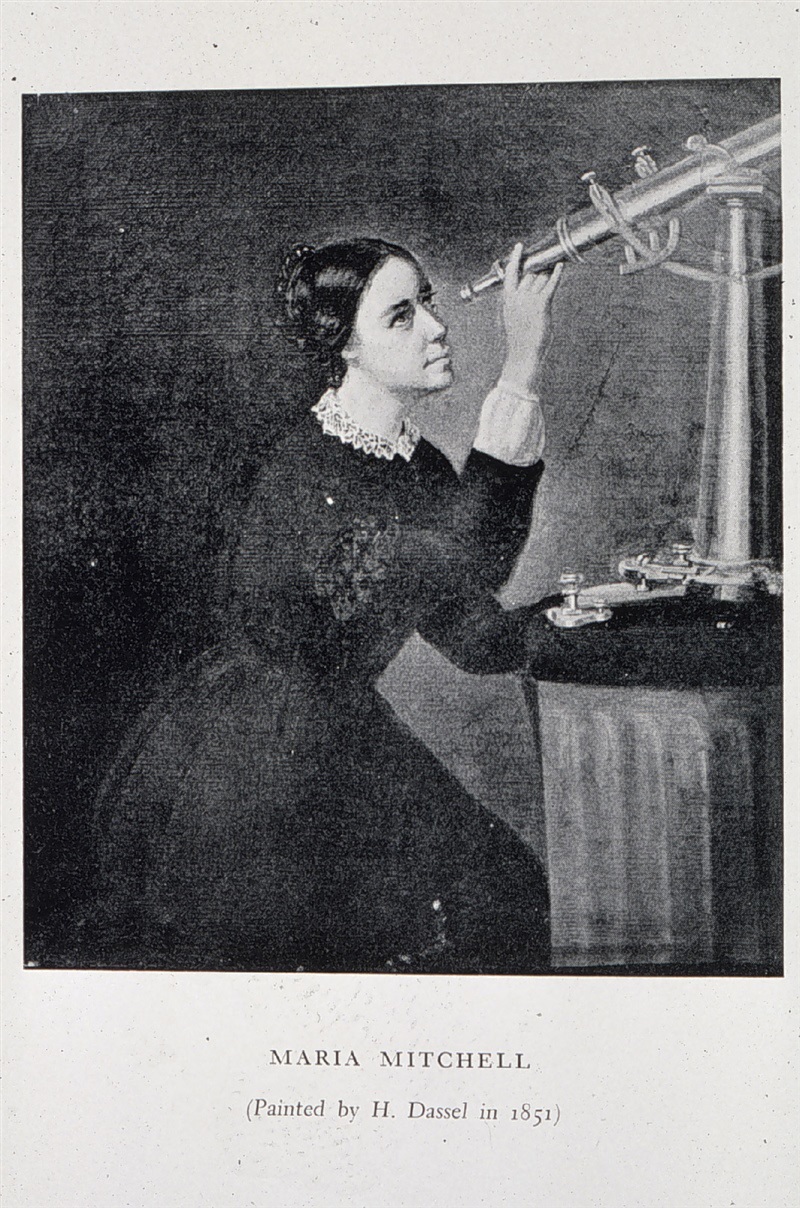Background
Maria Mitchell was born and raised in Nantucket, Massachusetts. Her father taught her the basics of astronomy when she was young, and it became her lifelong passion. Maria rose to fame in 1847 when she was the first person to spot comet C/1847 T1. She was also the first woman admitted to the American Academy of Arts and Sciences and the American Association for the Advancement of Science. She was a dedicated feminist who helped other women enter the field of astronomy.
About the Document
The first image is a portrait of Maria Mitchell made when she rose to fame in 1847. The second image is a photograph of Maria teaching an astronomy class at Vassar College in 1878. Maria was one of the first professors to join the staff at Vassar, which was the second college for women founded in the U.S. Maria was also one of the earliest people to teach astronomy at the college level, an important advance in the recognition of astronomy as a professional field. Maria was a beloved member of the Vassar faculty because she always took her students seriously as scholars and scientists.
Vocabulary
- astronomy: The study of space and the physical universe.
- feminist: A person who supports the equality of women.
Discussion Questions
- Why did people want to own a portrait of Maria Mitchell in 1847? What does this tell us about her early career?
- What does the second photograph reveal about Maria Mitchell’s career and legacy?
- Why is it important to recognize the contributions of women scientists?
Suggested Activities
- After analyzing these two portraits, ask students to make a poster that teaches others about the life and legacy of Maria Mitchell. What images will they include? What should the text say? How can they best convey her importance to both women’s history and science history?
- Maria Mitchell was honored during the Seneca Fall Convention of 1848. After analyzing these photographs, ask students to read the Declaration of Sentiments and then discuss why Maria was considered a role model for women’s rights activists.
- For more women and STEM in this era, see: Climate Warning and Life Story: Elizabeth Cogley.
Themes
SCIENCE, TECHNOLOGY, AND MEDICINE








